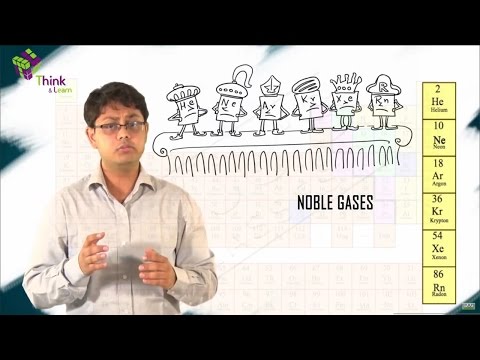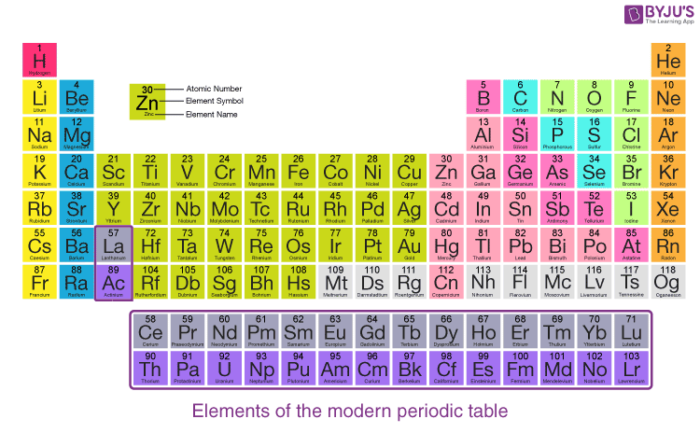What Element Is in Period 3 Family (Group) Iia
History of the Periodic Table
Earlier scientists assumed that the properties of elements are periodic functions of their atomic masses. On the basis of this supposition, Mendeleev placed 63 elements in a vertical column chosen groups and in horizontal rows called periods.
This method was rejected as it could not explicate the position of certain elements, rare earth metals, and isotopes. A scientist named Henry Moseley removed these defects and put forward the modern periodic tabular array with the modern periodic law.
Table of Content
-
- Recommended Videos on Modern Periodic Table
- Moseley's Periodic Law
- Modernistic Periodic Tabular array
- Features of Modern Periodic Tabular array
- Classifications Of Elements in the Periodic Tabular array
- FAQs
Recommended Videos on Mod Periodic Table

Moseleys Periodic Police:
In the year 1913, Henry Moseley studied the frequencies of the 10-rays Which were emitted when certain metals were bombarded with high speed electrons. He found that in all the cases, the square root of the frequency was directly proportional to the diminutive number of the atom of the metals. These studies believe that atomic number is the fundamental property of an element. In the above observation Moseley gave the Modern Periodic Law which states that:
Concrete and chemical properties of the elements are the periodic functions of their atomic numbers.
Modern Periodic Table:
A tabular arrangement of elements in groups and periods which highlights the regular trends in backdrop of elements is defined as the periodic tabular array.

Features of Modern Periodic Table
There are eighteen vertical columns known as groups in the modern periodic table which are bundled from left to right and seven horizontal rows which are known every bit periods.
| Group number | Group proper name | Property |
| Group 1 or IA | Alkali metals | They form strong alkalis with water |
| Grouping 2 or IIA | Element of group i earth metals | They also form alkalis but weaker than group one elements |
| Group 13 or IIIA | Boron family unit | Boron is the beginning fellow member of this family |
| Group 14 or IVA | Carbon family | Carbon is the first member of this property |
| Group 15 or VA | Nitrogen family | This group has non-metals and metalloids |
| Group sixteen or VIA | Oxygen family | They are too known equally chalcogens |
| Grouping 17 or VIIA | Halogen family | The elements of this group form salts. |
| Group eighteen | Null grouping | They are noble gases and nether normal weather condition they are inert. |
Likewise, Read:
Classifications Of Elements in the Periodic Tabular array
The elements of grouping one, 2, 13, 14, 15, 16, and 17 are known as the main group elements or normal elements. The elements of groups 3, 4, 5, half-dozen, 7, 8, 9, 11 and 12 are known as the transition elements. Group 18 is callednoble gases or inert gases. Their outermost crush is completely filled. Due to this stable electronic configuration, they generally don't react with the other elements.
When we talk about the periods of a modern periodic tabular array, ane should go on in heed that the number of shells nowadays in an atom determines its period number. The elements of period one will have only i vanquish, elements of period two will accept 2 shells and and then on. The first period of the modern periodic tabular array is the shortest period as it contains simply two elements. The period number ii and 3 consists of eight elements each and is known as short groups. Period four and five have eighteen elements and are known every bit the long group. In the modern periodic tabular array, group number 3 of period vi contains the lanthanide serial which are the rare earth elements. We accept radioactive elements (actinides) nowadays in group 3 of menses seven.
And then we have seen the properties of the modern periodic tabular array. To learn more well-nigh the periodic table and other concepts of chemistry, register with BYJU'S.
Often Asked Questions – FAQs
Which elements vest to group 15 of the modern periodic table?
In the modern periodic table of elements, the following fall nether group 15:
- Nitrogen (N)
- Phosphorus (P)
- Arsenic (As)
- Antimony (Sb)
- Bismuth (Bi)
These elements are collectively referred to as the pnictogens (or the nitrogen family unit).
What trends in electronegativity tin be seen in the modern periodic table of elements?
In the modern periodic table, the electronegativity of elements increases across a catamenia (row) and decreases down a group (cavalcade). Therefore, the bottom-left virtually element (francium) is predicted to have the everyman electronegativity and the top-right most element (fluorine) is predicted to have the highest electronegativity. The noble gases are non considered since they are relatively inert).
How are the elements classified into different blocks in the modern periodic table?
The modern periodic table of elements tin be broken downward into iv blocks – the s-block, the p-block, the d-block, and the f-block. This classification is based on the types of orbitals that comprise the valence electrons of the element. For example, s-cake elements have valence electrons in s-orbitals and d-block elements have their valence electrons in d-orbitals.
What are the f-block elements?
The f-block elements are the elements of the modern periodic table whose valence electrons lie in f-orbitals. These elements tin can be broadly classified into two categories.
- The lanthanides – elements whose valence electrons lie in the 4f orbital.
- The actinides – elements whose valence electrons prevarication in the 5f orbital.
What are the trends in the atomic/ionic radii of elements in the modern periodic tabular array?
The diminutive/ionic radii of elements increases while traversing down a group in the modern periodic table due to the addition of new electron shells. The atomic radii of the elements mostly decrease across periods due to the increase in electronegativity and the increase in the effective nuclear charge acting on the outermost shells.
Source: https://byjus.com/chemistry/modern-periodic-table/
Post a Comment for "What Element Is in Period 3 Family (Group) Iia"